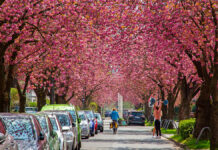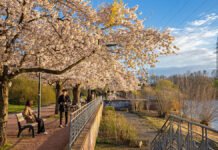Modena Città Nord is an amazing way to kick off your journey in the Italian city. Due to the high density of vegetation along the streets of the northern city gateway, your first impression will be overwhelming. Dive in deeper and explore how beautiful the clash of colours looks in this part of Modena.

What to expect
- 1. About Modena Città Nord
- 2. Chiesa San Giuseppe – The Memorial Temple for Fallen Locals in World War I
- 3. Viale F. Crispi – Colourful Arcades nearby Modena’s Rail Gateway
- 4. Corso Vittorio Emanuele II – The Green Boulevard of Modena Città Nord
- 5. Piazzale Mario d’Aleo – Behind Modena’s Palazzo Ducale
- 6. Viale III Febbraio – Sneak Peek of Modena Centro
- 7. Piazza San Domenico – Welcome to Modena City Centre
- 8. When to visit Modena Città Nord
- 9. How to get there
- 10. Conclusion
1. About Modena Città Nord
Modena surprises with a special feature outside its old city walls. Its streets are packed with tall trees which literally shine. Depending on your approach, this phenomenon can be missed easily. One of these green parts can be visited in the northern centre around the main railway station.
This part has a special historic background. The avenue Corso Vittorio Emanuele II, linking the centre’s core with the main railway station area, was once a great canal. Called Naviglio di Modena, it connected the city with the Po River and Adriatic Sea via River Panaro. Since 1858, the canal flows below the streets of the avenue.
Thus, the still existing number of tall trees are probably the symbolic remnants of the canal’s surroundings. Today, they contribute to the visual aesthetics of Modena Città Nord. Besides that, other great stuff enrich the journey through this area.
2. Chiesa San Giuseppe – The Memorial Temple for Fallen Locals in World War I
Imagine leaving the Enzo Ferrari Museum in Modena Città Nord. Now, you want to proceed to the city centre on foot. What a coincidence that this tour starts with a striking monument. By taking Via Piave, the church San Giuseppe stands out immediately.
Surprisingly, it doesn’t look like one of those classic Italian church designs. This one appears with a huge cupola, surrounded by another four smaller ones, though. Somehow, its structure reminded me of some Pantheons, like the one in Lisbon.
In fact, this church has the role of a memorial temple. After the First World War, it was built as a memorial for the 7237 fallen soldiers of Modenese origin. In 1931, the catholic church was completely finished.

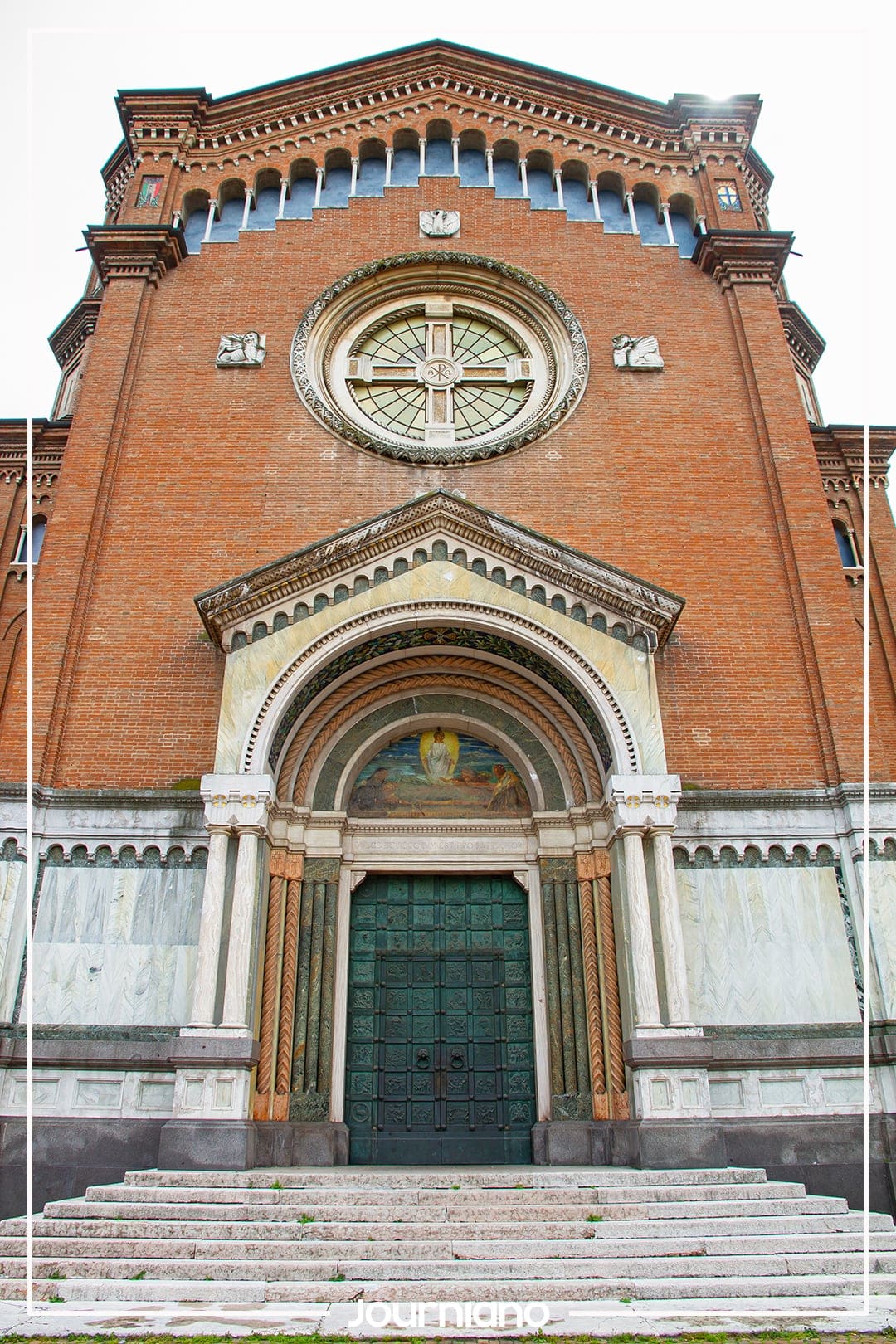
While the inside’s decoration is nowhere as grandiose as in classical Italian churches, it’s still worth entering for a moment. Especially looking up to the cupola contributes to the experience. Furthermore, there’s also an accessible crypt, which I haven’t visited back then. If you’re interested in it, don’t skip it.
By proceeding the journey along Via F. Crispi towards the city’s main station, you don’t only get a tremendous street view of the church. Moreover, you get a real impression of how green streets in this area can get.
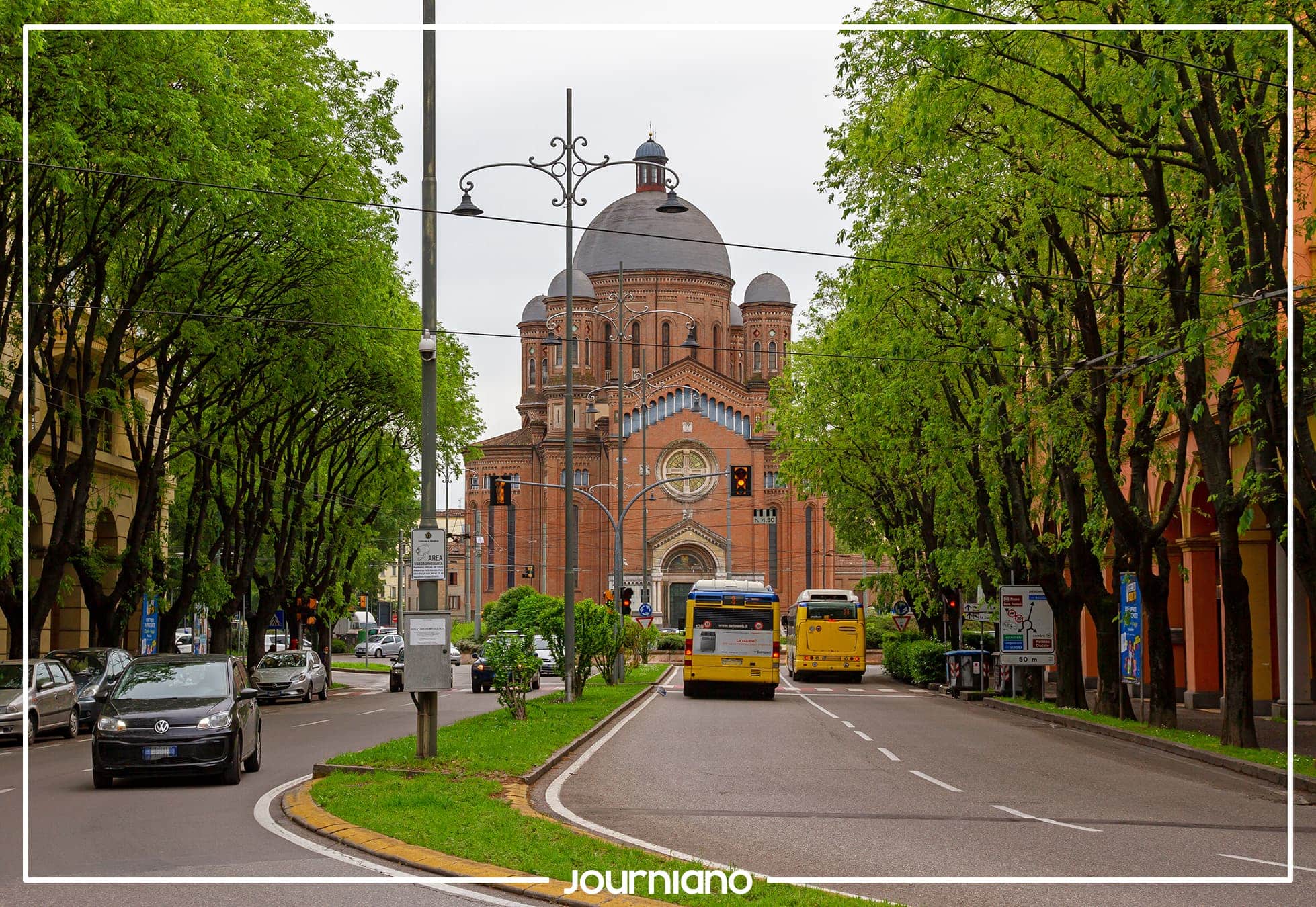
3. Viale F. Crispi – Colourful Arcades nearby Modena’s Rail Gateway
Approaching the city’s rail main gateway, or starting from there, awards you with great arcades. Called “portici” in Italian, these archways are sights on their own. Stylistic wise they can be arranged in so many creative ways to not become boring at all. They aren’t just passages but their own world.
So, the street connecting Modena Station is called Viale F. Crispi. It doesn’t matter which side street you choose; you walk through arcades both times. However, walking along the southwestern side rewards you with a great diversity of design. Although some portici are attached to each other, they change their appearance like facades.
This also applies to the arcades along Viale F. Crispi. From a rosy tone, it changes to red and yellow ones. Some phases have the vibe of a galleria with stores or bars, others are rather plain. Even the pavements change in each section. Hence, it never gets boring.
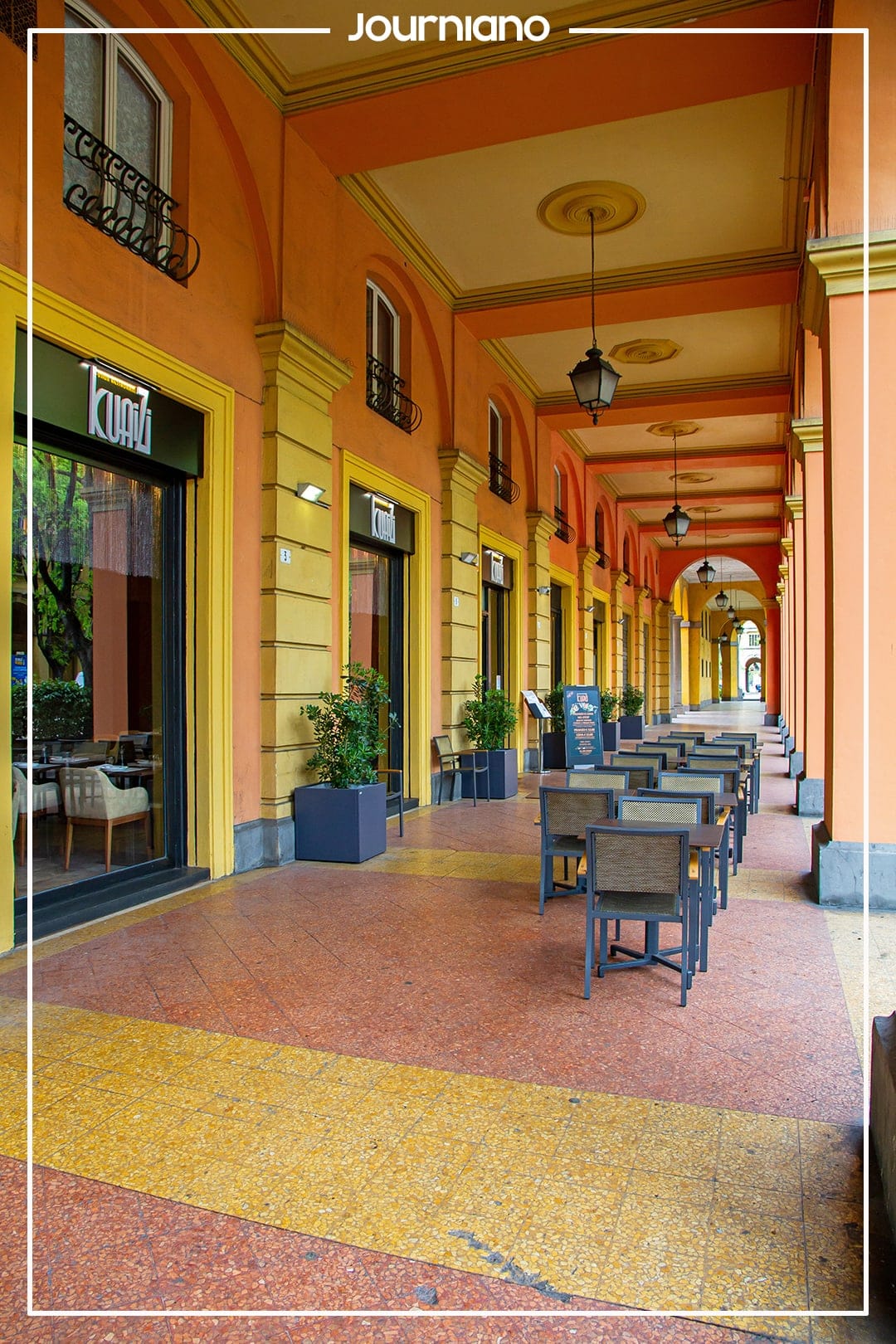

Getting closer to the main station, the portici appear in a completely different way. This time, the ceiling is not flat but curved as in a proper archway. Furthermore, the supporting pillars look more like classic Italian columns. The variation in design is already amazing. Bear in mind, this is only a ridiculously small chunk of Modena.
Plus, what is yet to come until arriving in the city’s heart, underlines the absurdity of being underrated.

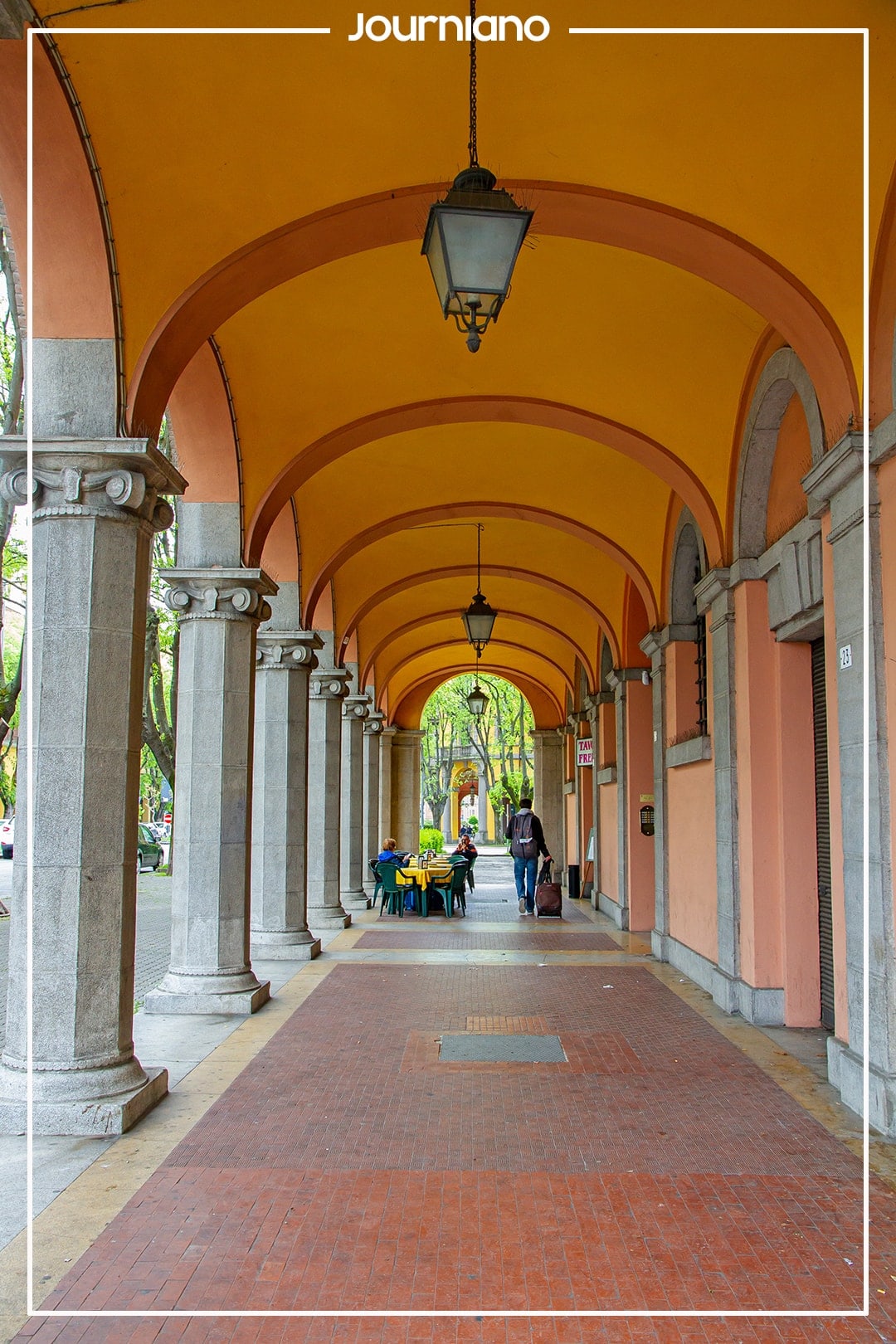
4. Corso Vittorio Emanuele II – The Green Boulevard of Modena Città Nord
Many roads lead to Rome. This also applies when heading towards Modena’s city centre from its main station. You could head back via Via F. Crispi, pass by the huge roundabout and enter the main street, Corso Vittorio Emanuele II, towards the “centro”. Sometimes, it’s smarter to take another random path to reach the destination.
4.1 Via Bonasi – A Sneak Peak of Modena’s warm Colours
First of all, a personal note regarding Modena. All this which I’m presenting to you in this article happened during my very first visit to this city. Strolling through Modena Città Nord formed my very first impression. Thus, believe me when I’m saying that taking a deviation through Via Bonasi towards Corso Vittorio Emanuele had a fundamental impact on my opinion.
While the previously shown areas were rather dominated by the colour yellow, Via Bonasi alone breaks it and emphasises the clash of colour on a completely new level.

From yellow to orange and rose tones, the facades change to much warmer colours. Looking into side streets is generally fundamental in Italy. When doing this here, Via Pallamaglio underlines the leitmotif. Dark red tones and clinker facades join Modena’s colour palette. All this is a teaser showing the overall diversity of the Emilian city.

4.2 The colourful Avenue leading to the City Centre – Corso Vittorio Emanuele II
Once you arrived at Corso Vittorio Emanuele II, the green spectacle reaches its momentum. Huge and tall trees crown the wide boulevard. In addition to that, their height and size make it possible to almost touch the buildings. Hence, creating sort of a green archway for pedestrians and cyclists. Speaking of pedestrians and cyclists, the given space for these two groups is amazingly generous.

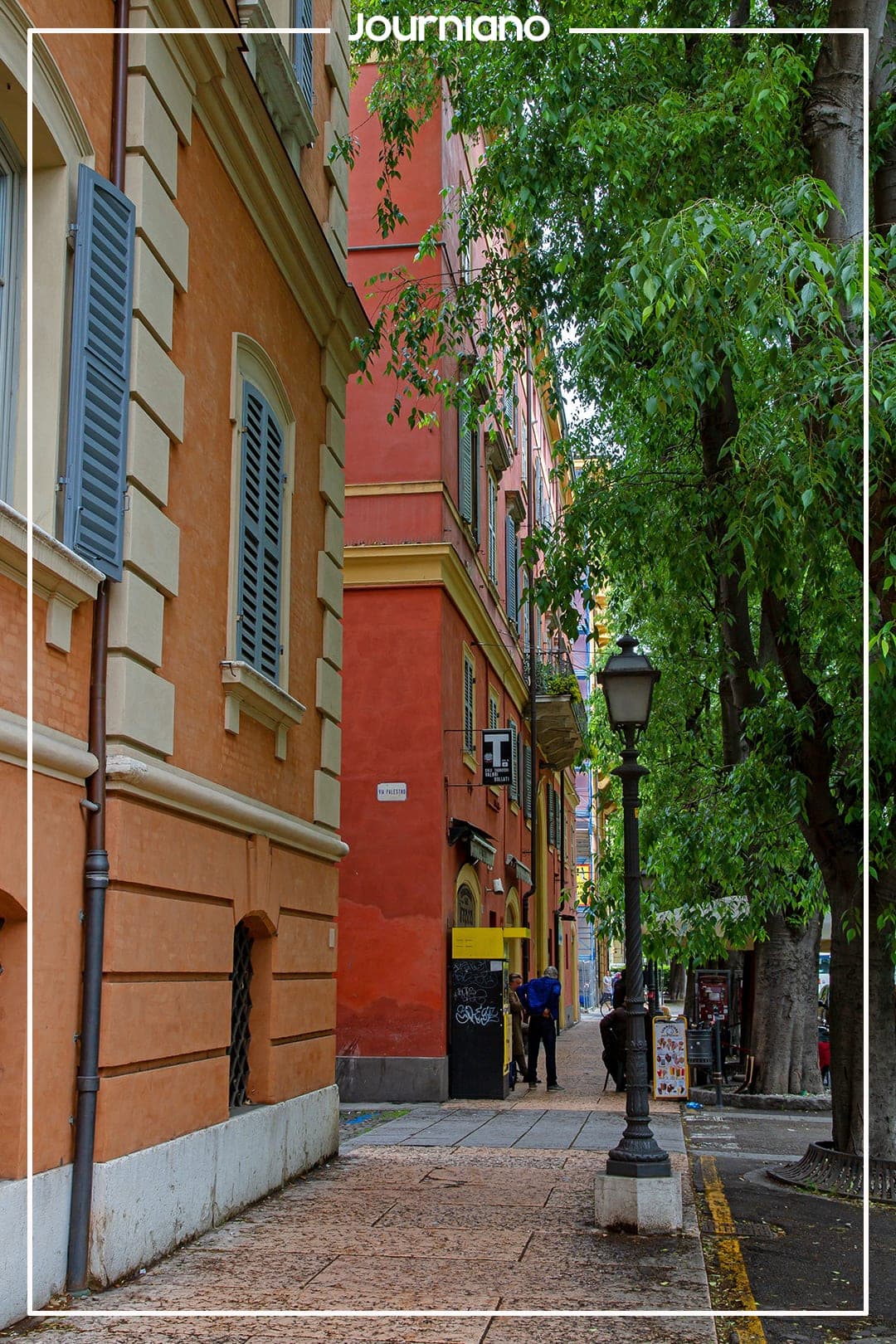
Overall, this avenue is a great balance between green and warmer colour tones. Moreover, it offers various photo motifs. Especially, looking up and seeing that those trees reach almost the same dimensions of the surrounding buildings is simply a joy to look at.
Looking into side streets shouldn’t be missed here either. You never know what you might find differently than previously.
In the end, all this leads to the backside of Modena’s northern city landmark.


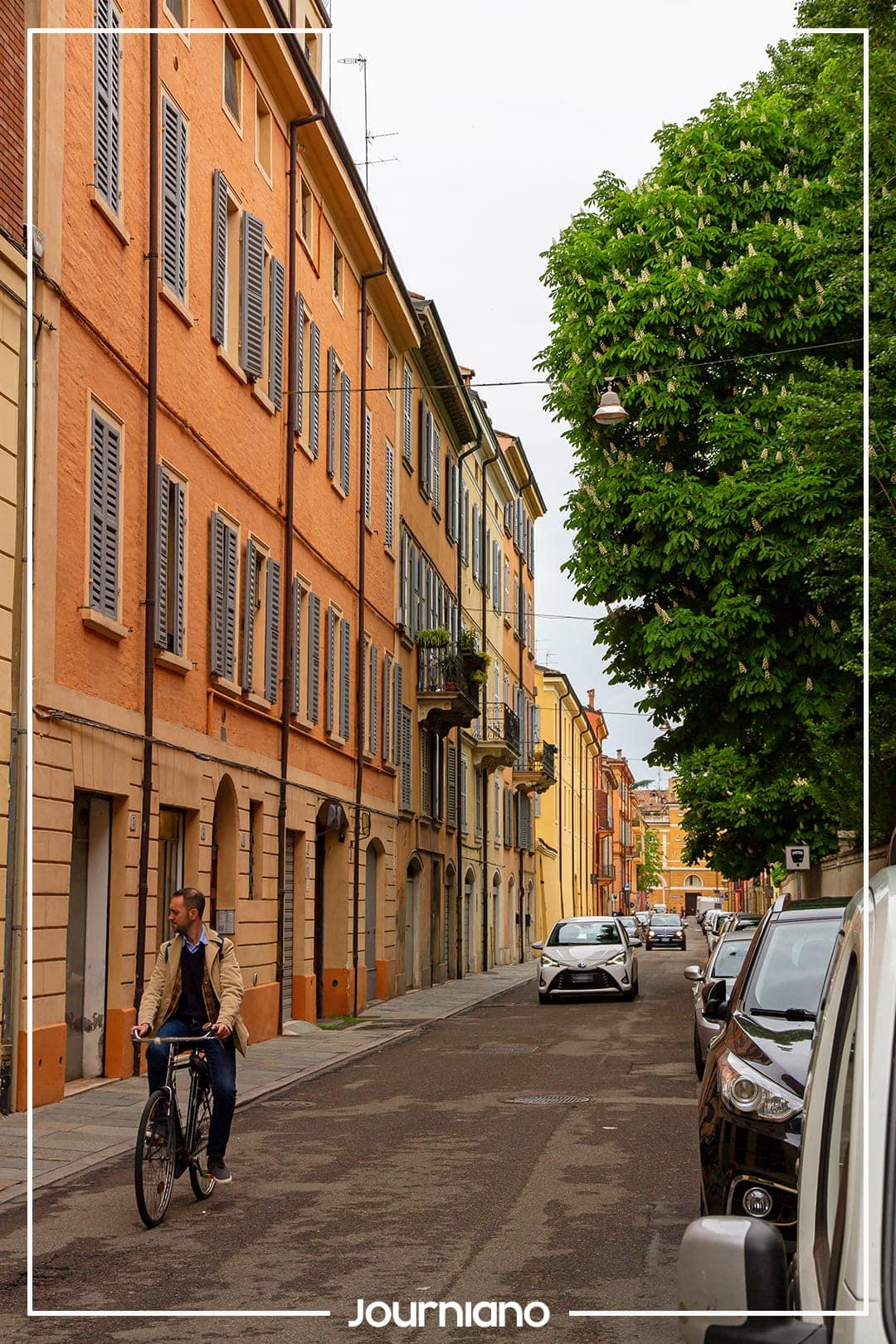
5. Piazzale Mario d’Aleo – Behind Modena’s Palazzo Ducale
At the backside of Modena’s Palazzo Ducale, amazing colourful street views don’t stop. When looking eastbound along Corso Camillo Benso Conte di Cavour, you see a beautiful gangway connecting the palace with its extension on the other side of the street. All this is framed gorgeously by trees and colour explosive architecture.
Furthermore, there is a non-accessible square, which is kind of the backyard of the palazzo. Piazzale Mario d’Aleo transmits at least an idea of what can be expected at its front.
Just around the corner, awaits you the final path to arrive at Modena Centro.


6. Viale III Febbraio – Sneak Peek of Modena Centro
From now on, the city centre is just a stone’s throw away. By taking Viale III Febbraio, you get the first real impression of what might lurk beyond. Modena’s striking landmark, the Duomo, stands out for the very first time. If this isn’t a fantastic sneak peek of the unknown journey, I actually don’t know what a great teaser is.
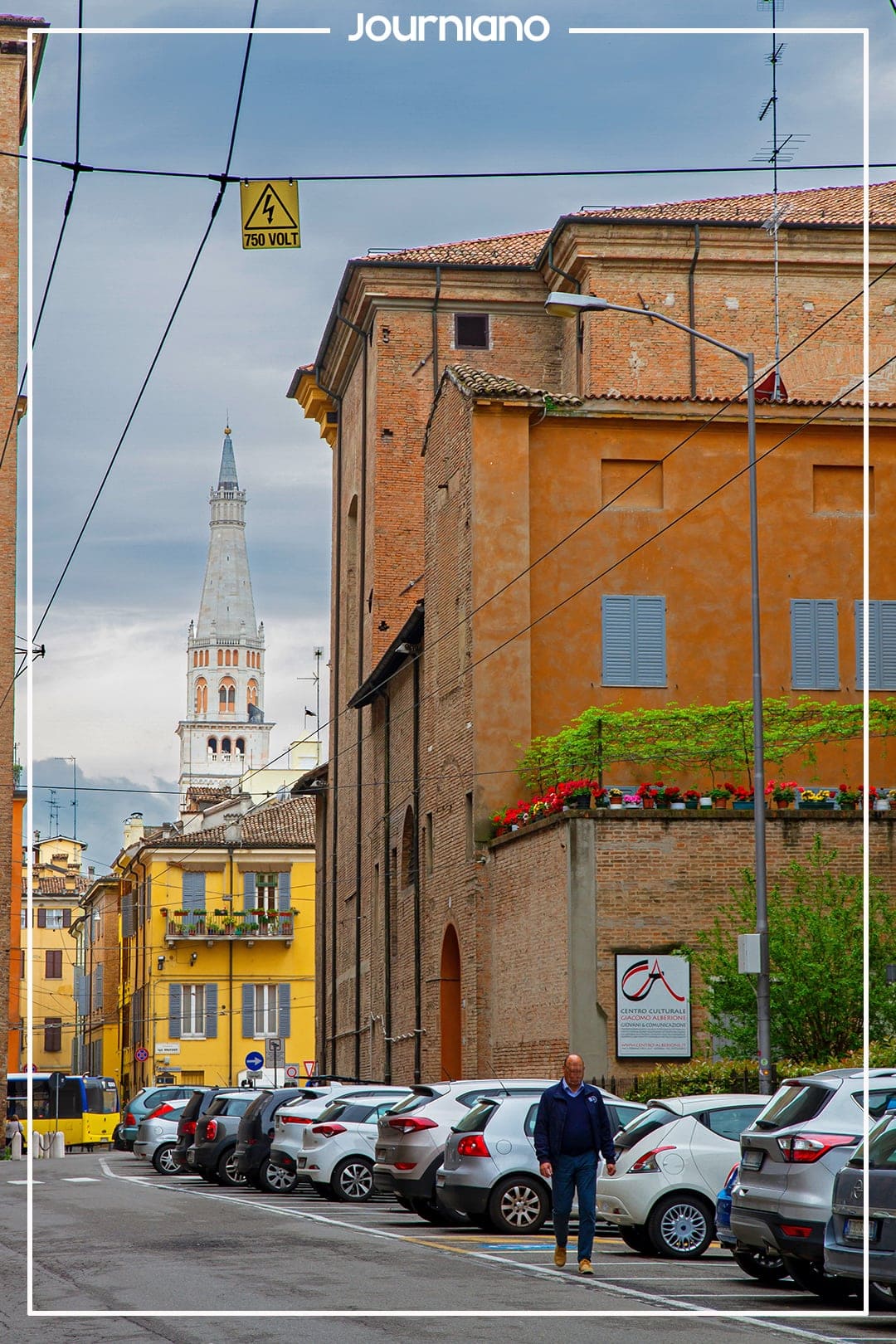
7. Piazza San Domenico – Welcome to Modena City Centre
Welcome to Modena Centro! Followed by Viale III Febbraio, you arrive at Piazza San Domenico. This marks the beginning of the city centre. The tiny square that is being abused as car parking area, is a marvellous place to have a short break.
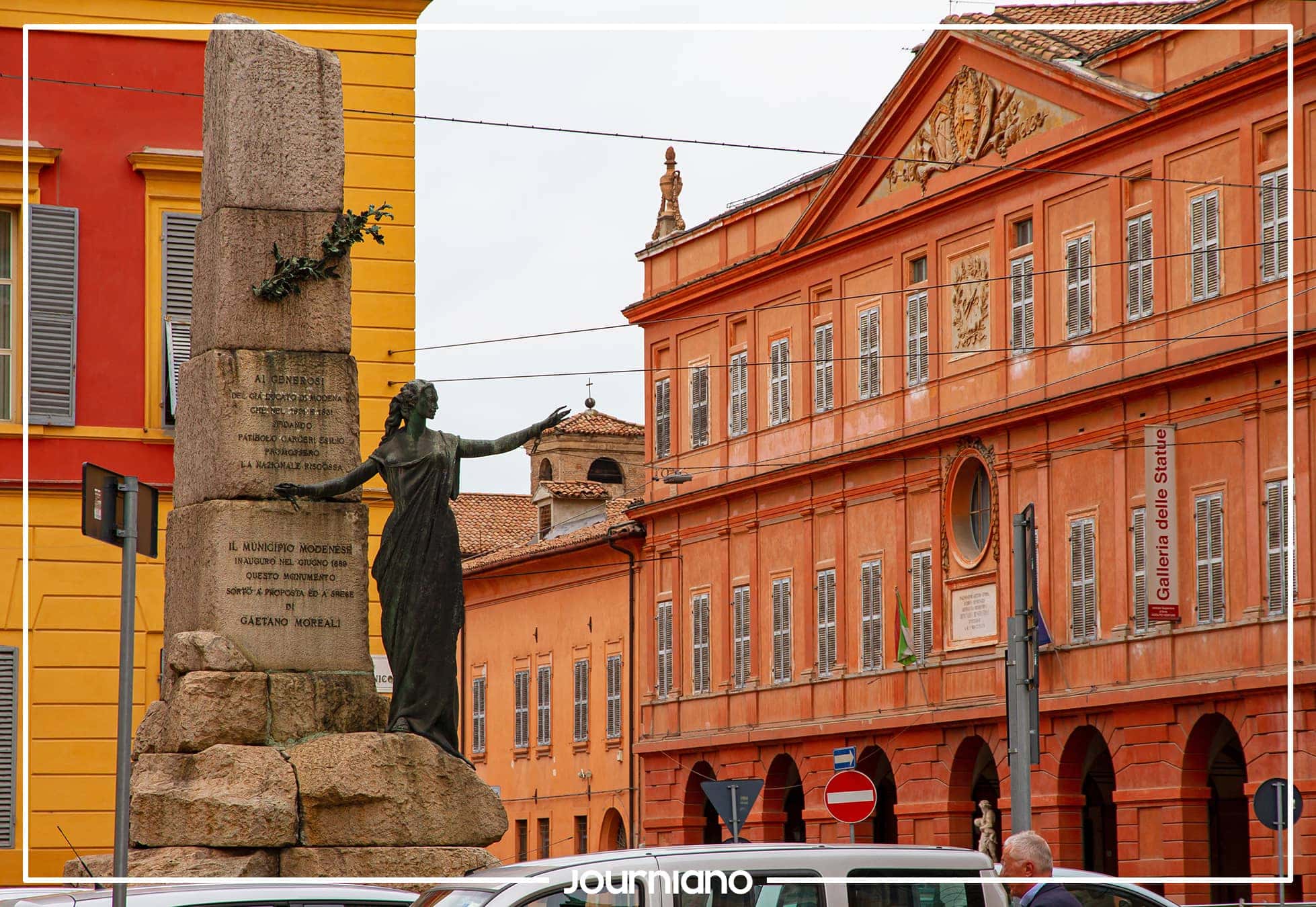
In the middle of the piazza, the Monumento Alla Libertà, a monument dedicated to freedom, is a great spot for a 360° degrees observation. There’s a bunch to digest at this point. From an art school to further sidestreets and arcades, everything looks a bit more massive. Especially when you change the perspective to Palazzo Ducale’s majestic front with its huge public space vis-à-vis.
Piazza Roma, the city centre’s big northern square, will welcome you with open arms.
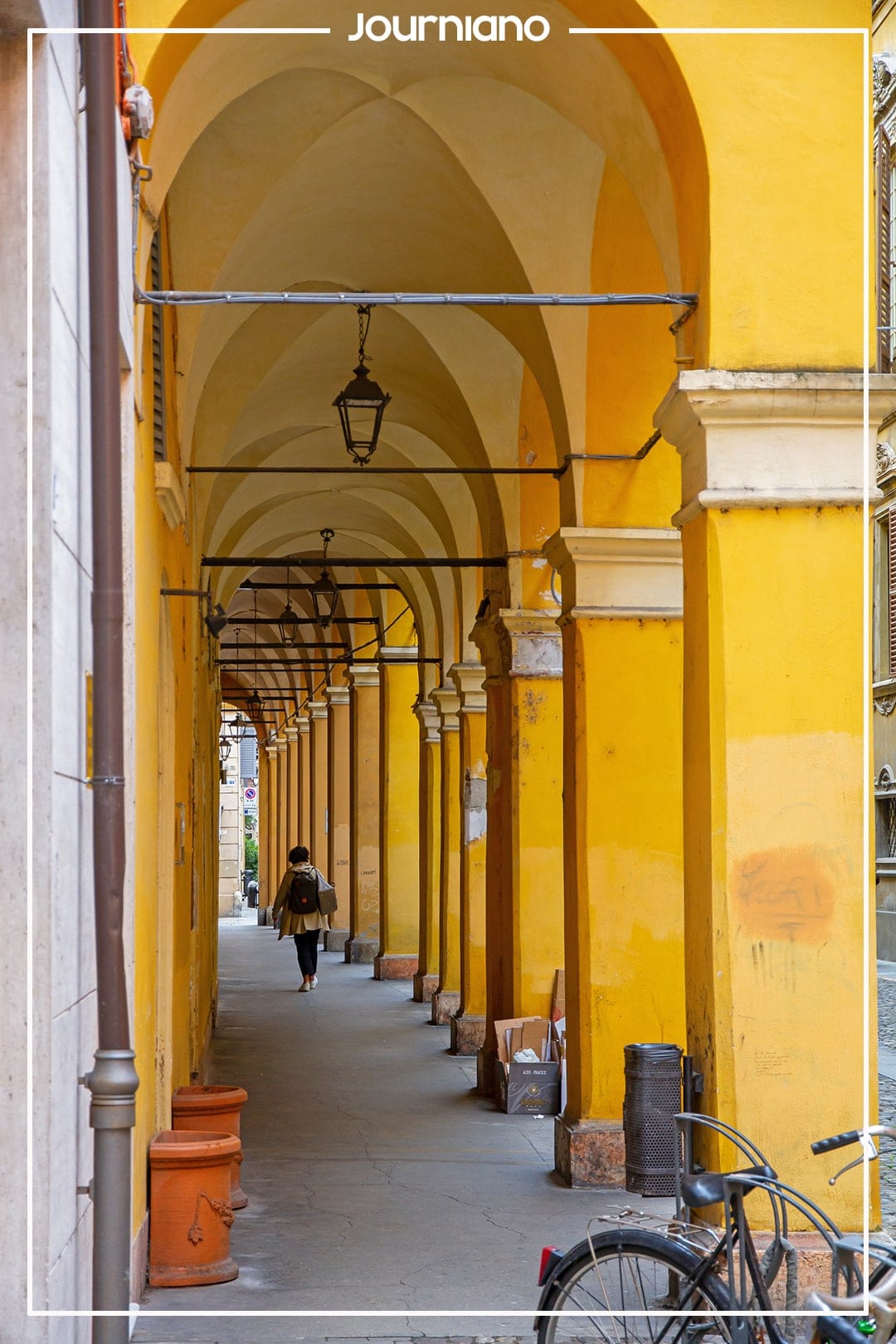

8. When to visit Modena Città Nord
Although Modena Città Nord is beautiful during every season, I recommend visiting it during the following period:
- End of April until Early September
Especially the beginning of this period is utterly amazing. Due to the fact that the trees’ leaves are fresh and got a high green saturation, they seem to glow.
9. How to get there
Depending on your location or starting point, you need three spots to know. Chiesa San Giuseppe, the main station and Corso Vittorio Emanuele II. If you arrive from outside by train, the railway station is your starting point. Should you come by car, I recommend parking here close to the Enzo Ferrari Museum. Nevertheless, with the embedded map below, your personal navigation gets super easy.
10. Conclusion
Modena Città Nord is an amazing starter to kick off your journey. Its gorgeous variety of sights, colourful facades and great density of tall trees, increases your appetite for more. Especially when arriving by train, I advise going by foot through the streets of the city north to reach the centre. If you’re interested in visiting the Enzo Ferrari Museum, this is a win-win situation. As it is also situated in this area, you can combine these two attractions easily.


